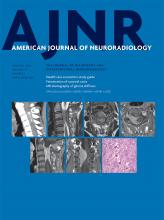We read with great interest the article by Thakur et al,1 in which they investigated the association of CSF volume removed by a tap test and the clinical response in patients with normal pressure hydrocephalus (NPH). In the “Conclusions” of their study, they found no evidence to support a higher volume of CSF removal impacting gait testing, and they discussed a high volume of CSF removal possibly not being necessary in a diagnostic lumbar tap test. We appreciate the authors for evaluating the data of such a large group of patients with NPH (n = 249) and conducting detailed analyses of these patients. Nonetheless, we think that this is a devastating result and detailed interrogations of the study results should be conducted to avoid misleading conclusions. Hence, we would like to discuss some points for a better understanding of this valuable report, which may also add crucial perspectives for future studies.
First, in the introduction, the authors mention some complications of the lumbar tap test (LTT), such as headache and pain that may compromise gait testing in these patients. However, the potential impact of these complications, which may be more frequent in patients with higher CSF volume removed, was not mentioned in the “Discussion” of the study. On the other hand, the authors suggested that passive flow of CSF from the puncture site, which might have been altered according to the size of the bore needle, could have influenced the study results. In accordance with this hypothesis, they found that patients whose taps involved a larger bore needle showed significantly more improvement in immediate time scores (P = .04, in the patient subset showing improvement in time scores immediately after LTT). In contrast, they stated that patients whose taps involved a larger bore needle had a nonsignificant tendency to have a greater improvement in 24-hour times scores (P = .06). However, we think that from a mechanistic point of view, the main effect of passive CSF flow is supposed to be more pronounced in the 24-hour evaluations (considering the cumulative effect across time), whereas in the immediate evaluations, CSF volume removal would be more efficient; this outcome was not the case in this study. Moreover, it would be completely irrational to comment about an association between the measured amount of CSF removal and the clinical response if we agreed that the effect of passive flow changes according to the needle size. Of note, an association between the needle gauge and improvement was not found in the overall group (P = .283). Therefore, we think that the necessity for further analyses of the needle size effect as well as a related discussion should be considered by the authors.
Second, the authors stated that the study was retrospective and that randomization was not a factor other than that age and sex might have confounded the results. We agree with this thought. Nevertheless, we think that confounding variables might not be eliminated via a method of randomization of patients. Although there are various hypotheses trying to explain the pathophysiology of NPH, the underlying mechanisms as well as responsible agents have not been fully clarified currently. Distortion of periventricular tissue due to altering CSF pressure dynamics, the pressure gradient between the ventricles and periventricular tissues, and the influence of accompanying deep vascular disease constitute some of these hypotheses.2 Besides, a major consideration regarding the occurrence of NPH is the evolution of the mechanisms involved and changing pressure gradients according to the stage of the disease.3 Thus, it can be suggested that the combination of functioning mechanisms in the occurrence of NPH may differ among individuals and according to the stage of the disease. Therefore, we think that for a rational evaluation of the association between CSF removal volume and clinical improvement of the patients, the LTT test should be performed in the same patients with NPH in distinct time courses (at an interval sufficient to avoid the influence of the initial LTT) to totally exclude confounding factors. The results of the studies with this method would yield substantial information for clinicians regarding the optimal CSF volume to be removed for determining the appropriate patients for shunt surgery.
- © 2018 by American Journal of Neuroradiology












